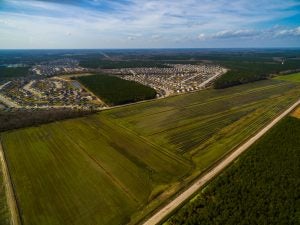Just a generation ago, the word “farmer” likely elicited a certain picture in many people’s heads, but nowadays a different image may appear. It was once thought that farmers and agriculturalists were the “uneducated,” performing a laborious job that was reserved for those unfit for “urban life,” or simply those continuing a family operation. No more can one assume anything about a farmer as the demographics of this profession are rapidly changing.
A decade ago, women were reported as making up only 22 percent of agricultural producers, but now that number has jumped to more than 36 percent. The number of minority farmers is increasing as well as young and new farmers. Young producers, those who the U.S. Department of Agriculture defines as under 35 years old, make up nearly 10 percent of agricultural producers in the U.S. now. While the average age of farmers is still increasing, so is the number of young producers, meaning the next generation is preparing to fill the shoes of those before them.
Even though 8 of every 10 young farmers worked some type of second job, young producers who operated farms still generated a substantial income — 32 percent of them making over $50,000 in the year. Compare this to all U.S. farms, which only 25 percent of make more than $50,000 in a year. This is a rather substantial change as we see volatile prices and difficulty making a living in some agriculture industries, but this statistic shows some promise for those starting out.

It’s promising to see newer generations gaining a place at the table. Just recently there was quite a fear that agriculture as we knew it would no longer be a viable lifestyle or profession. Many young people were either not interested in the jobs available or were persuaded into other professions with the possibility of higher incomes and easier lifestyles.
It appears that the up-and-coming farmers are ready to make great moves in the industry. Over 28 percent of farmers today have less than 10 years of experience farming, which means it may be difficult, but not impossible to start from scratch in the agriculture industry.
The new generation of farmers exhibit some highly marketable skills. Currently, 36 percent of all farmers in the U.S. have some type of higher-education degree, but this number is significantly higher for young producers, jumping to 81 percent. Now, college education doesn’t mean you’re any more prepared than the next guy, but it does open opportunities for additional education like business management, marketing, and technology. Unfortunately, many of the young farmers who participated in the study cited student loan debt (10 percent of respondents) as the most significant challenge to their farming endeavor, so it does come with some drawbacks.
About 17 percent of the young farmer participants stated that access to land is the most significant challenge to their operation, whether it be to maintain their current production or difficulties in expanding. Nearly two-thirds of farmland in the U.S. is currently managed by someone over the age of 55, but the National Agricultural Statistics Service estimates that between 2017 and 2022, something close to 100 million acres of farmland will need a new farmer or risk being converted to other uses.

Farmers are making tough decisions as they plan for the future, developments pay significantly higher prices for land than farmers are capable of, so do you continue the land use for your passion or do you sell for profit? It’s not a decision I would want to be faced with.
Despite difficulties, there is still hope for the farmers of the future and the overall future of U.S. agriculture. Increases in technology, focus on operational sustainability and improvements to best management practices across the industries will help sustain and even grow our production capabilities.
Michelle Miller, the Farm Babe, is a farmer, public speaker, and writer who has worked for years with row crops, beef cattle, and sheep. She believes education is key in bridging the gap between farmers and consumers.



